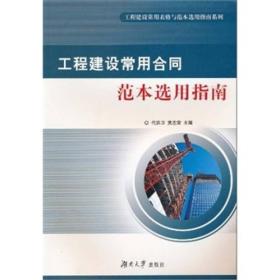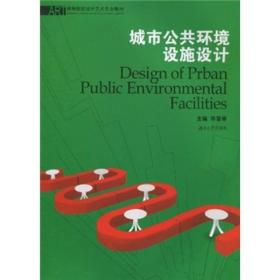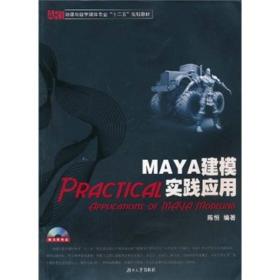
商业决策中的会计学(AccountingforDecisionMaking)
¥ 38.5 4.5折 ¥ 86 全新
仅1件
河北保定
认证卖家担保交易快速发货售后保障
作者赵艺 著;赵艺 编
出版社四川大学出版社
出版时间2021-07
版次1
装帧平装
货号2
上书时间2024-06-28
- 最新上架
商品详情
- 品相描述:全新
图书标准信息
- 作者 赵艺 著;赵艺 编
- 出版社 四川大学出版社
- 出版时间 2021-07
- 版次 1
- ISBN 9787569047905
- 定价 86.00元
- 装帧 平装
- 开本 16开
- 页数 284页
- 【内容简介】
- 本书为全英文会计专业教材,共六章。第一章“什么是会计”介绍会计的定义、对象、目的、会计实务的方法和功能。第二章“会计基本概念”分析了会计相关基本概念,研讨如何具体确认、计量、记录企业的资产、负债、所有者权益、收入、费用和利润。第三章“记账法”介绍借贷记账法的基本原理及其运用,学习会计循环,让学生初步了解复式簿记原理等。第四章“如何准备财务报表”主要以财务报表的六大要素为主线,分别具体分析财务报表的编制原理与方法,穿插国内外的企业实际案例。第五章“如何使用财务报表”从报表使用者角度,阐述如何理解财务报表信息以及报表分析的基本原理与方法。第六章“会计工作的发展与创新”对会计职业道德、财务共享中心的应用、人工智能与财务机器人给会计行业带来的巨大机遇与挑战等进行了总结。
- 【目录】
-
Chapter 1 What is accounting?
Learning objectives
Chapter-opening case
Chapter preview
Main part
1.1 The definition and goals of accounting
1.1.1 The definition and characteristics of accounting
1.1.2 Accounting objects and goals
1.2 Functions and methods of accounting
1.2.1 Accounting functions
1.2.2 Accounting method
1.3 Basic assumptions and basis of accounting
1.3.1 Basic accounting assumptions
1.3.2 Basis of accounting
1.4 Accounting information users and their quality requirements
1.4.1 Accounting information users
1.4.2 Accounting information quality requirements
Glossary
Chapter 2 How does economic business reflect?
Learning objectives
Chapter-opening case
Chapter preview
Main part
2.1 Where does the money come from and where does it go: static accounting elements
2.1.1 What the business owns: assets
2.1.2 Debts owed to others: liabilities
2.1.3 My family property: owner\'s equity
2.2 What is the business situation of the company: dynamic accounting elements
2.2.1 Business activities can bring resources: revenue
2.2.2 Operating activities will consume resources: expenses
2.2.3 What is the operating result: profit
2.3 One \"basket\" for one business: accounting titles and accounts
2.3.1 Accounting title
2.3.2 Accounting account
Glossary
Chapter 3 How should the account be recorded?
Learning objectives
Chapter-opening case
Chapter preview
Main part
3.1 Bookkeeping has rules: double-entry bookkeeping
3.1.1 Single-entry bookkeeping and double-entry bookkeeping
3.1.2 Debit and credit bookkeeping method
3.1.3 Accounting practice for business activities
3.2 Bookkeeping has a basis: accounting documents
3.2.1 Source documents
3.2.2 Recording vouchers
3.3 Bookkeeping has methods: accounting processing
3.3.1 The composition and types of accounting books
3.3.2 Setting and registration of accounting books
3.3.3 Reconciliation and closing account
3.3.4 Choose a suitable accounting processing procedure
Formula toolkit
Glossary
Chapter 4 How to prepare the reports?
Learning objectives
Chapter-opening case
Chapter preview
Main part
4.1 Preparatory work before preparation of accounting statements
4.1.1 Property checking
4.1.2 Other preparations
4.2 Analysis of the balance sheet structure
4.2.1 The content and function of the balance sheet
4.2.2 Structural characteristics of the balance sheet
4.2.3 The preparation method of the balance sheet
4.3 Analysis of income statement structure
4.3.1 The content and function of the income statement
4.3.2 Structural features of the income statement
4.3.3 How to prepare the income statement
4.4 Analysis of cash flow statement structure
4.4.1 The content and function of the cash flow statement
4.4.2 Structural characteristics of the cash flow statement
4.4.3 Preparation basis of cash flow statement
4.5 Analysis of the structure of the statement of changes in owner\'s equity
4.6 Notes to the financial statements
4.7 Cross-check relationship
4.7.1 Cross-check relationship between accounting subjects
4.7.2 Cross-check relationship between accounting statements in the same period
4.7.3 Cross-check relationship between the current financial statements and prior accounting statements
4.7.4 Cross-check relationship between the main table and the attached tables of financial statements
Glossary
Chapter 5 How to use the reports?
Learning objectives
Chapter-opening case
Chapter preview
Main part
5.1 Procedures and methods of statements analysis
5.1.1 Statements analysis procedures
5.1.2 Common methods of statements analysis
5.1.3 Analysis from the perspective of report users
5.2 Specific case analysis
5.
点击展开
点击收起
— 没有更多了 —












以下为对购买帮助不大的评价